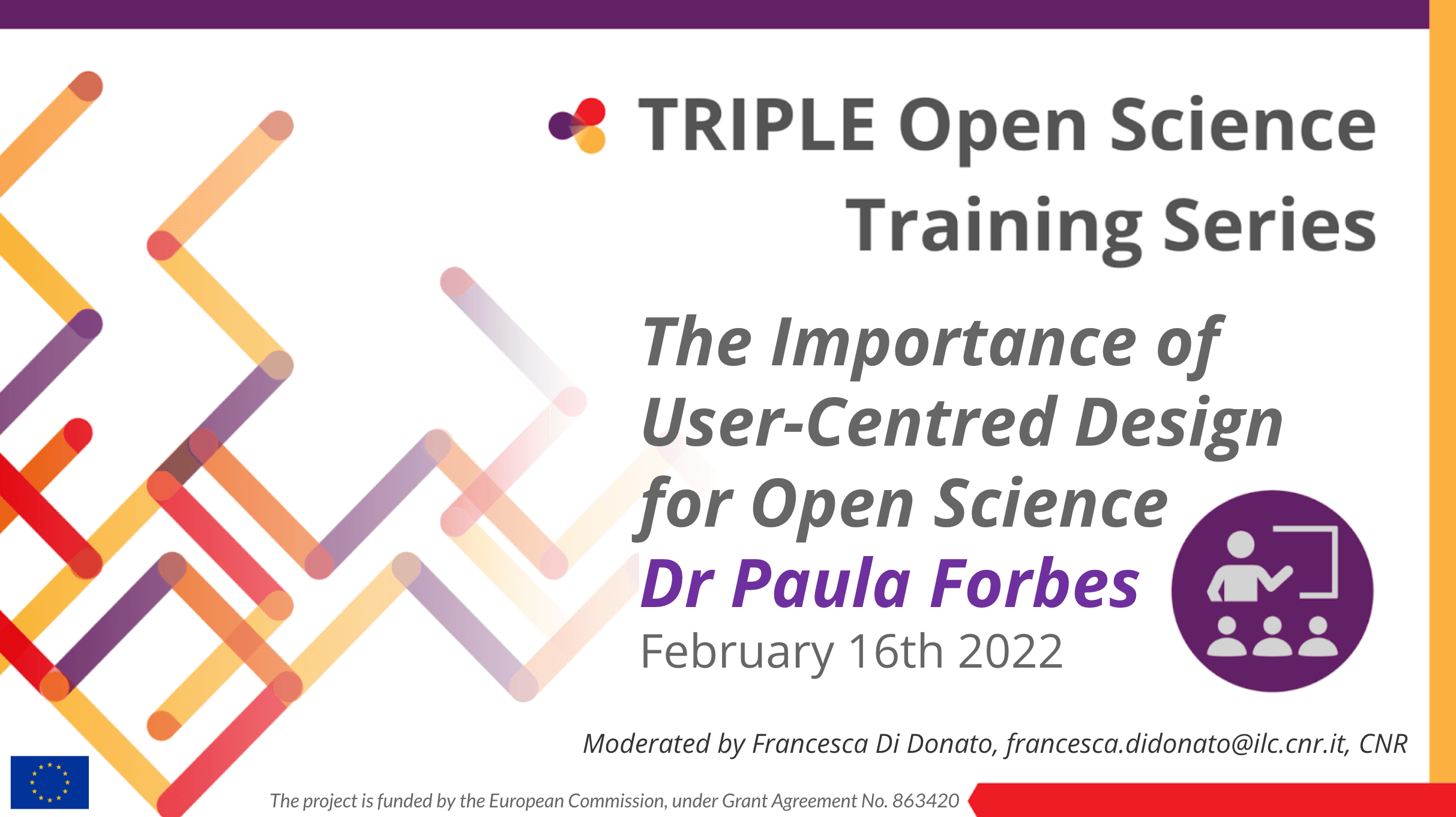The Importance of User-Centred Design for Open Science Training
This webinar is part of the TRIPLE Open Science Training Series.
The training session is dedicated to User-Centred Design for Open Science and is presented by Paula Forbes, a cross-disciplinary researcher on User research who works across Social Science, Computing Science & Life Science and is based at Abertay University.
The training starts with an open question to the participants on what they consider to be the main aims of user-centred design. Paula Forbes then explains that the user-centred approach involves users in the design process to see how associate services can support user goals. As such, it is important to get a deep understanding of the end users in an iterative process.
Paula Forbes illustrates the process through the work carried out with end users to design the Gotriple platform: The work started with understanding the context of use and user requirements, and then moved forward with the production of design solutions. Then, the design was evaluated against user requirements and a successful design solution was decided upon. It was highlighted that this process is far from linear and should be repeated until a suitable solution is agreed on.
Paula Forbes also demonstrates how user requirements are defined through the creation of personas (“user archetypes” that help make decisions about design solutions that are informed by a user driven perspective) and scenarios (narratives of the personas interacting with the future service) and are then prioritised among them.
Finally, two methods are presented and compared: the Cognitive Walkthrough method and the Artefacts Ecology Mapping which were used to understand how the GoTriple platform could be of benefit for end users.
You can download the slides here: https://doi.org/10.5281/zenodo.6207721
Learning outcomes:
After watching this video you should:
- Understand the importance of user-centred design in the Open Science perspective
- Be able to synthesise the main phases of the iterative design process
- Be able to define user requirements, scenarios and personas
- Understand the main differences and complementarities of the cognitive walkthrough method and the artefacts ecology mapping method.
